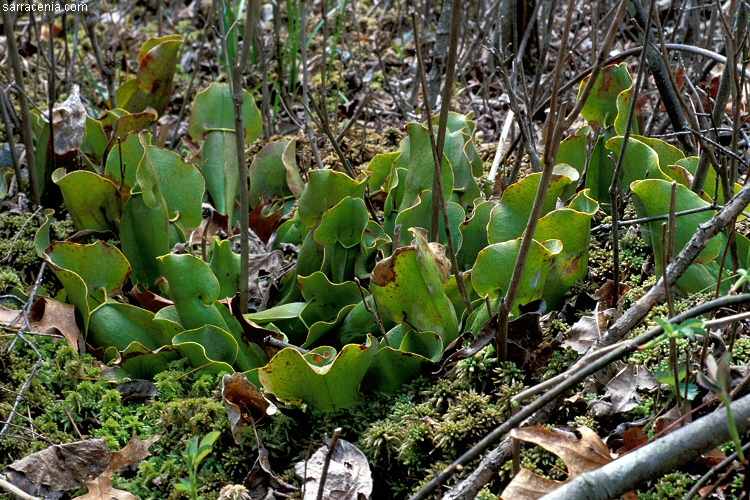
A closer view:
A light cloud passed overhead, softening the light and allowing me to take this nice image of the very neat plants!
This site was obviously in a state of active management. Many of the woody shrubs had been cut back to provide more light to
the pitcher plants, and I had to frame my photographs carefully to avoid having the images dominated by red flagging! The
folks who had been stewarding the site had conveniently left a big stack of wooden boards at the edge of the bog, obviously
to construct impromptu walkways through the bog without overly damaging the Sphagnum mat. Mandy and I used these
when appropriate.
Here is another view of some plants, although with some more
contrasty lighting.
I wondered about the longevity of this site, and why so much manual removal of the woody vegetation was necessary. It is
well known that these mountain bogs are threatened by human-caused
changes in the water conditions. Some are drying out. The ones that
are not drying out often have increased levels of nutrients in them because of agriculture. The increased nutrients fuel
noncarnivorous plants while killing the Sphagnum. The bog changes, and turns into a woody,
wet hollow devoid of carnivores. What will this site look like in 20 years? Will it have any pitcher plants?